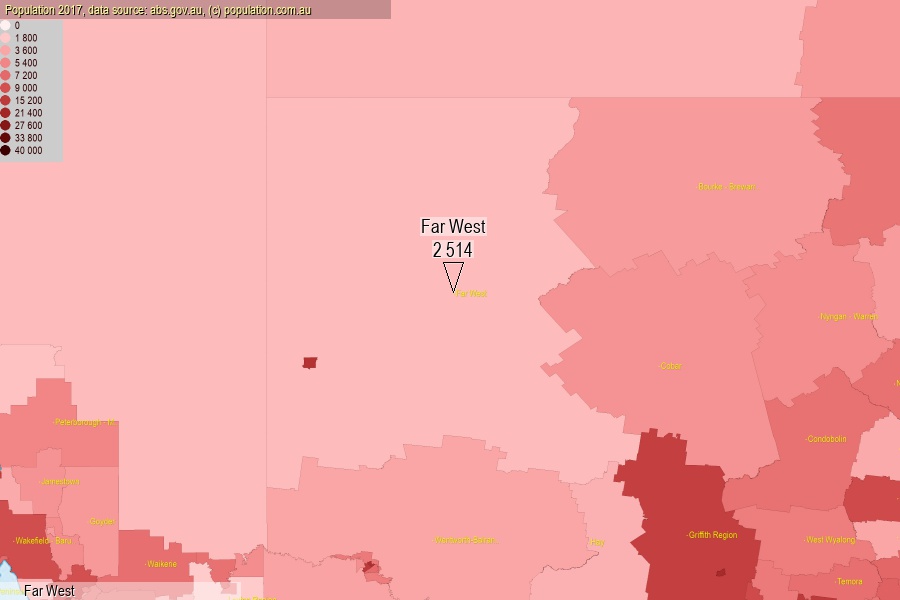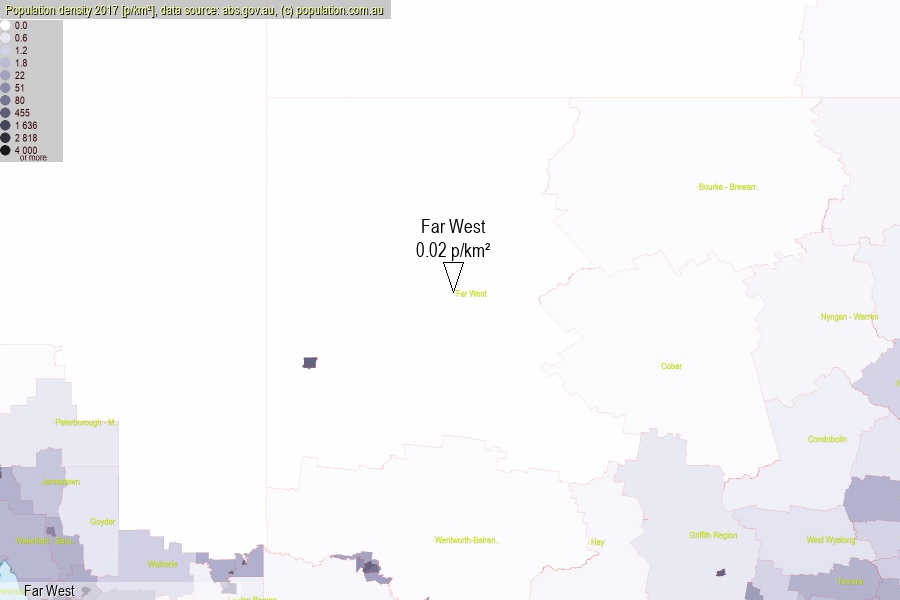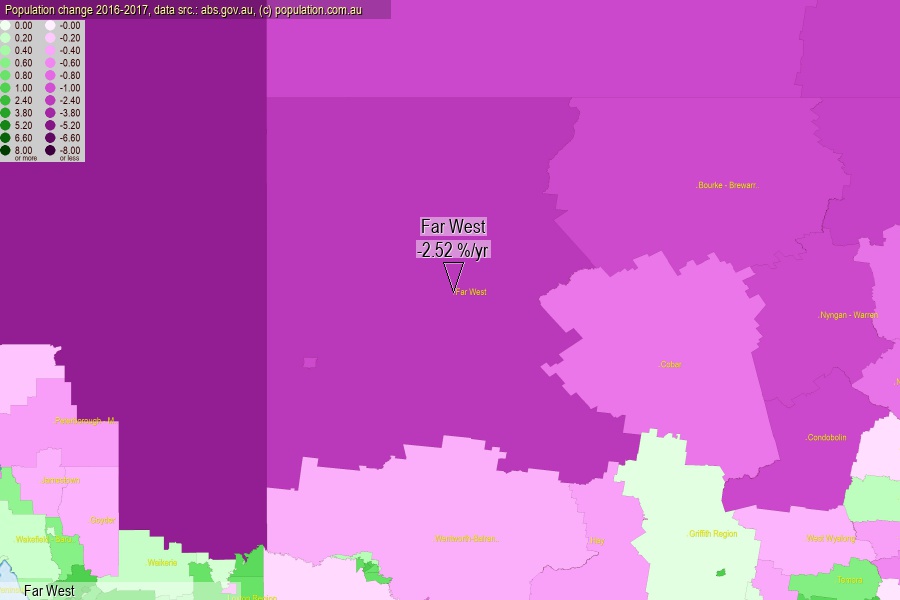 population.com.au
population.com.auLast official estimated population of Far West (as Statistical Area Level 2) was 2 514 people (on 2017-06-30)[2]. This was 0.01% of total Australian population and 0.032% of NSW population. Area of Far West is 146 690.10 km², in this year population density was 0.02 p/km² . If population growth rate would be same as in period 2016-2017 (-2.52%/yr), Far West population in 2025 would be 2 050. [0]



Click to enlarge. Far West is located in the center of the images.
Population [people], population density [p./km²] and population change [%/year] [2]
View borders » (new window) [4]
[1991-1992] -1.64 %/Yr.
[1992-1993] -2.40 %/Yr.
[1993-1994] -3.52 %/Yr.
[1994-1995] -4.62 %/Yr.
[1995-1996] -2.78 %/Yr.
[1996-1997] -2.09 %/Yr.
[1997-1998] +1.49 %/Yr.
[1998-1999] +0.72 %/Yr.
[1999-2000] -1.73 %/Yr.
[2000-2001] -0.55 %/Yr.
[2001-2002] -3.90 %/Yr.
[2002-2003] -4.13 %/Yr.
[2003-2004] -2.55 %/Yr.
[2004-2005] -3.09 %/Yr.
[2005-2006] -4.03 %/Yr.
[2006-2007] +0.04 %/Yr.
[2007-2008] 0.00 %/Yr.
[2008-2009] +0.73 %/Yr.
[2009-2010] +0.54 %/Yr.
[2010-2011] +0.43 %/Yr.
[2011-2012] -1.65 %/Yr.
[2012-2013] -1.17 %/Yr.
[2013-2014] -1.59 %/Yr.
[2014-2015] -1.76 %/Yr.
[2015-2016] -1.49 %/Yr.
[2016-2017] -2.52 %/Yr.
[0] Calculated with linear interpolation from officially estimated population
[1] Read more about SA2 and Australian Statistical Geography Standard (ASGS) on abs.gov.au
[2] Population data from Australian Bureau of Statistics (Population and density: 2017; change: 2016-2017)
[3] Digital Boundaries: Australian Statistical Geography Standard (ASGS) 2016.
[4] Border coordinates are simplifyed using Ramer-Douglas-Peucker algorithm.